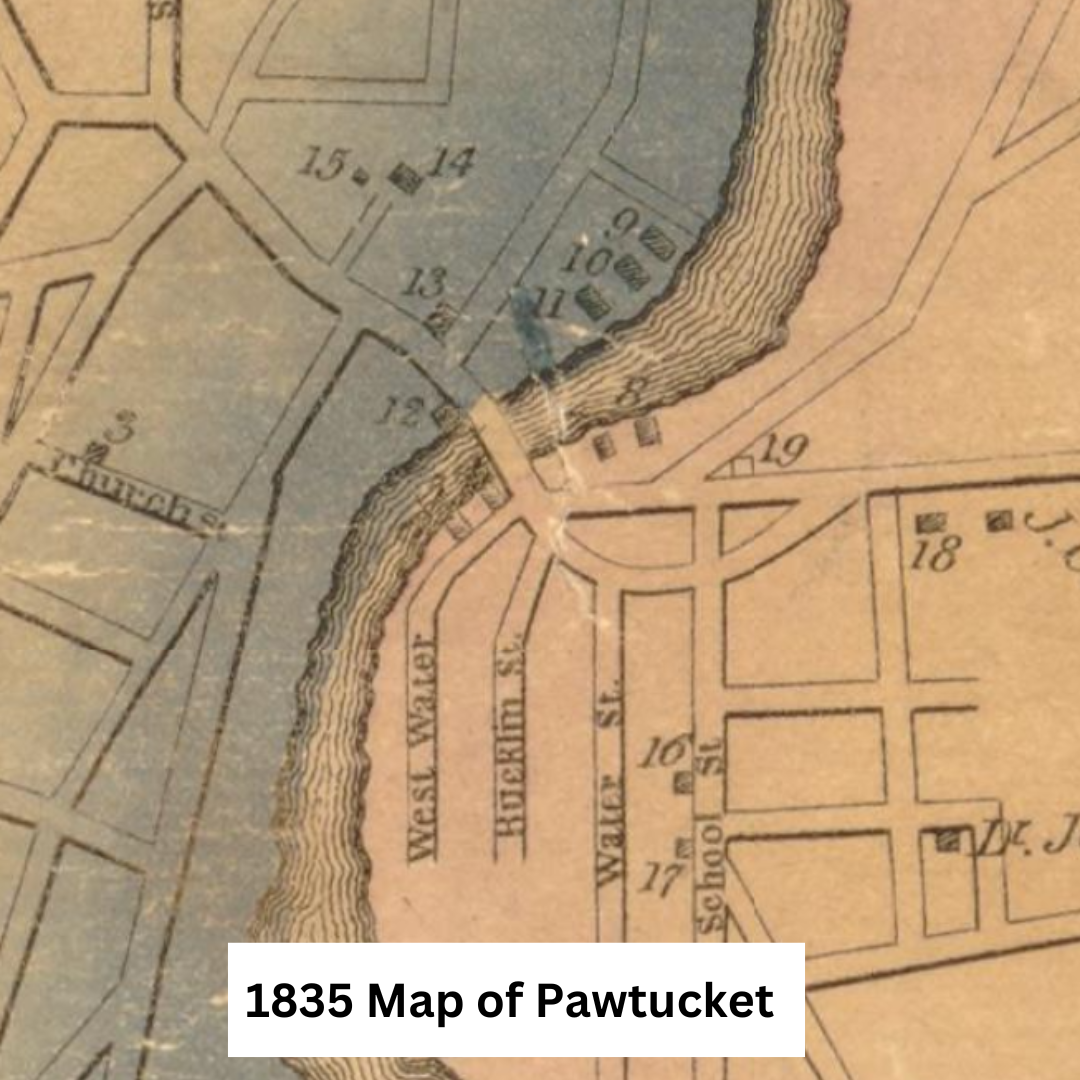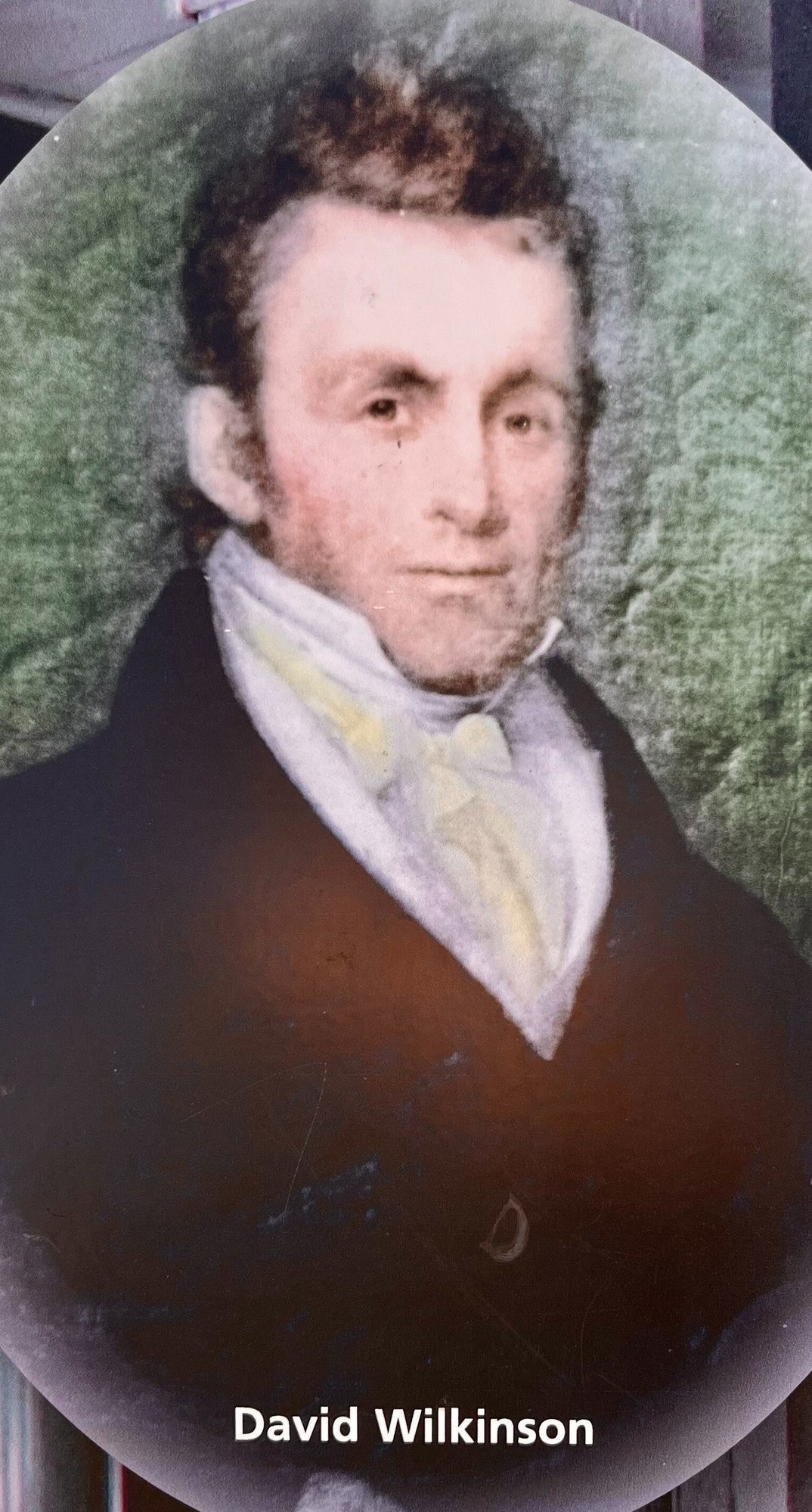Only a year after arriving in Rhode Island, Samuel Slater builds the revolutionary machines that will ignite the American Industrial Revolution.
23 minutes | 1789 - 1790
Hear About:
📜Why Moses Brown was so intent on bringing England's water powered technology to America.
📜Why Samuel Slater risked so much to come to America.
📜How Samuel Slater and his team worked together to rebuild England's water powered technology in America

Moses Brown
Samuel Slater
An immigrant from Belper, England who hoped to become a wealthy industrialist by recreating Richard Arkwright's water-powered cotton spinning technology in America.
Oziel and David Wilkinson
Oziel and his son, David, were extremely talented metal workers who will play a key role in helping Samuel Slater recreate the Arkwright spinning frame in America.

Historic Downtown Pawtucket | Pawtucket, RI
Late 18th century Pawtucket was an ideal place for the birthplace of the American Industrial Revolution. To start, it was near Providence, a city full of risk taking entrepreneurs who had enough excess capital to fund Slater's activities. Second, it was a well populated town filled with extremely talented artisans and metal workers who could help Slater rebuild England's cotton spinning technology. Finally, it was situated along the Blackstone River so it had direct access to a steady flow of water that would be used to fuel the cotton spinning machines.

Location of Moses Brown Elm Grove Estate (zoomed out)




Moses Brown's Elm Grove Estate
Following an extremely successful career as a merchant, Moses Brown acquired a large parcel of land to the west of the Seekonk River. If you needed further proof of his wealth then know that the house he built on that estate was originally only used as a seasonal residence.

The Genius English inventor who created the water-powered cotton spinning and carding machines that revolutionized textile manufacturing.




Richard Arkwright, Inventor of the Cotton Spinning Machine
Before Samuel Slater even considered immigrating to England, a genius inventor named Richard Arkwright invented a series of machines that ignited the Industrial Revolution in England. While his version of the cotton carding machine would prepare the cotton by seperating it from any fragments of leaves, seeds, etc., the cotton spinning machine (picture #2), also known as the water frame, would replicate the extremely delicate pulling and twisting process that goes into spinning cotton into yarn.

David Wilkinsons' Became Known as the "Founder of the American Machine-Tool Industry"
Although in the podcast we only discussed how David Wilkinson's helped Samuel Slater build America's first water-powered cotton spinning machine, he made additional contributions to the American Industrial Revolution. Not only did he build one of the nation's first steamboats but he also invented a machine for cutting screws, an tool that became known as the Wilkinson Lathe. Wilkinson's lathe was so impactful that decades after its invention Zachariah Allen was quoted as saying that "to this day [Wilkinson's Lathe] proved the most effective tool placed within the control of mankind for shaping refractory metals and for accomplishing the triumph of mind over matter. The slide engine is employed in the great machine shops of America and Europe.” Due to his achievements, Robert S. Woodbury, in his “Studies in the History of Machine Tools” said that “we may credit David Wilkinson with being the founder of the American machine-tool industry.
- The Transformation of Rhode Island, 1790-1860 by Peter J. Coleman
- Samuel Slater and the Origins of the American Textile Industry, 1790-1860 by Barbara M. Tucker
- Rhode Island: A History by William G. McLoughlin
- The Roots of American Industrialization, 1790-1860 by David R. Meyer
- Cultural Landscape Report for Slater Mill Historic Site by Blackstone River National Historic Park